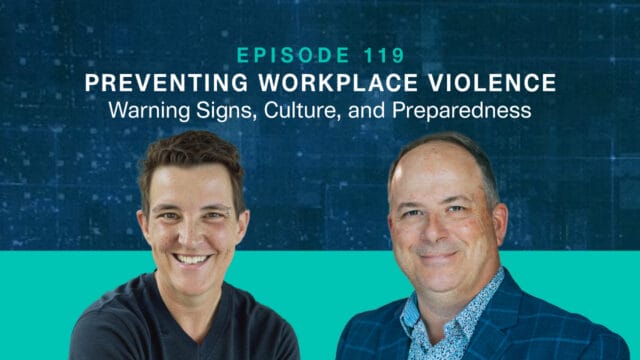
General Duty Clause in Focus: OSHA’s 2025 Reforms and Their Impact on Workplace Safety

The General Duty Clause is at the center of OSHA’s most significant regulatory shift in years. In July 2025, the Occupational Safety and Health Administration proposed sweeping reforms that could fundamentally change how workplace safety is regulated in the United States. These reforms are part of a broader federal push to reduce regulatory burdens and encourage economic agility.
Unlike past approaches that relied heavily on prescriptive standards, OSHA now favors performance-based compliance that gives industries more autonomy. While this flexibility may cut costs and simplify operations, it raises critical concerns about worker protection, federal oversight, and employer responsibility.
This article examines the core elements of the proposed reforms, explores how they intersect with the General Duty Clause, and provides strategies for employers navigating this changing landscape.
Key Proposed Changes
Elimination of Medical Evaluations for Certain Respirators
Under the current Respiratory Protection Standard (29 CFR 1910.134), employees who use respirators must undergo medical evaluations before use. These assessments are conducted by licensed healthcare professionals and ensure workers can safely wear respirators without endangering their health.
OSHA proposes removing this requirement for employees using N95 respirators and loose-fitting powered air-purifying respirators (PAPRs). The agency argues these devices have minimal physiological impact, and available data does not support mandatory screenings.
However, the change could introduce hidden risks. Even low-resistance respirators can worsen undetected respiratory or cardiovascular conditions. Without mandatory evaluations, such risks may go unnoticed, leading to preventable health emergencies. While employers might welcome fewer administrative tasks, they could face greater liability if an employee suffers harm.
Rescission of the Construction Illumination Standard
OSHA currently enforces minimum lighting requirements on construction sites under 29 CFR 1926.56. Adequate lighting is essential for preventing falls, avoiding equipment mishandling, and maintaining visibility in high-risk areas.
The proposed rescission is based on OSHA’s assessment that modern lighting technology and updated construction practices make the rule unnecessary. The agency claims it no longer addresses a significant safety hazard.
Yet poor lighting remains a common cause of accidents. Without a federal baseline, lighting quality may vary widely across projects, particularly those under tight budgets. The lack of enforceable standards could put workers in greater danger, especially on sites with heavy equipment and complex operations.
The Broader Regulatory Context
The 2025 reforms align with Executive Order 14192, “Unleashing Prosperity Through Deregulation,” issued by President Trump on January 31, 2025. This directive requires repealing ten existing regulations for every new one introduced. OSHA’s proposals embody this deregulatory approach, prioritizing voluntary compliance and industry-led safety programs over strict federal enforcement.
Supporters say this will free businesses from outdated rules, while critics warn it could weaken protections in industries where hazards remain persistent and severe.
Innovation vs. Safety: Finding the Balance
Deregulation advocates believe reducing compliance burdens fuels innovation and efficiency. They argue market reputation and internal accountability will motivate companies to maintain safe practices.
However, historical trends tell a more cautious story. Previous periods of deregulation often coincided with stagnant or rising injury rates. In contrast, strong oversight, hazard communication, and comprehensive training have consistently lowered workplace incidents. Without regulatory pressure, cost and time constraints may drive companies to cut corners.
Employer Responsibility in a Deregulated Environment
Even with reduced oversight, employers remain legally and ethically responsible for workplace safety. In fact, fewer federal rules mean companies must take greater ownership of risk management.
Employers should conduct detailed safety audits, modernize internal policies, and invest in training programs tailored to evolving risks. Building internal accountability systems, such as frequent inspections and transparent reporting, will be crucial.
Reinterpreting the General Duty Clause: A Turning Point
The General Duty Clause, found in 29 U.S.C. § 654(a)(1), requires employers to keep workplaces free from recognized hazards likely to cause death or serious injury. It acts as a flexible tool, allowing OSHA to address new or unforeseen dangers not covered by specific standards.
This clause has historically been essential in tackling hazards like ergonomic injuries, workplace violence, and infectious diseases. But the 2025 reforms aim to narrow its scope, introducing a reinterpretation rooted in a decade-old legal debate.
The SeaWorld Case and the Kavanaugh Doctrine
In 2014, OSHA cited SeaWorld after a trainer was killed by an orca. OSHA argued the park failed to provide a safe work environment under the General Duty Clause. The D.C. Circuit Court upheld the citation, confirming OSHA’s authority even in high-risk professions.
However, then-Judge Brett Kavanaugh dissented. He argued the General Duty Clause should not apply to risks “inherent and inseparable” from certain jobs, such as working with wild animals. Kavanaugh’s position is now influencing OSHA’s 2025 proposals, which seek to formally adopt this “Kavanaugh Doctrine.”
Codifying the Kavanaugh Doctrine
Under this change, OSHA would exclude certain hazards from General Duty Clause enforcement if they are inherent to the job. Examples include stunt work, professional sports, animal training, and specific agricultural activities.
The impact could be far-reaching. Determining which hazards are “inherent” is subjective and may lead to inconsistent enforcement. Industries with limited regulation, such as gig work or informal labor, could see protections weakened.
Effects on High-Risk and Informal Sectors
Agricultural workers handling heavy machinery or hazardous chemicals could lose protection if such dangers are deemed unavoidable. Gig economy workers, like rideshare drivers exposed to traffic risks, might also fall outside the clause’s coverage.
This approach could create a two-tier system, where some jobs are seen as less deserving of protection, not because risks are manageable, but because they are considered inevitable.
Legal and Policy Ramifications
Narrowing the General Duty Clause could spark litigation over what qualifies as “inherent risk.” Employers might use the doctrine to avoid liability, complicating OSHA’s enforcement efforts.
Additionally, the change could conflict with state safety laws and workers’ compensation rules, resulting in inconsistent protections across jurisdictions.
Risk, Consent, and Responsibility
Supporters of the change argue that high-risk workers accept certain dangers knowingly. They believe excessive regulation infringes on personal choice and industry flexibility.
Opponents counter that consent is often driven by economic need, not true choice. Workers may accept dangerous jobs without understanding the risks or having the power to demand safer conditions.
Even in hazardous industries, employers can often reduce risks through better training, equipment, or processes. Historically, the General Duty Clause has been a driver of such improvements.
Strategic Steps for Employers
To adapt to the new environment, employers should:
- Conduct thorough risk assessments for hazards that might be labeled “inherent.”
- Consult legal experts to navigate federal, state, and industry rules.
- Strengthen safety culture with ongoing training and open communication.
- Keep detailed records of training, hazard evaluations, and incident investigations.
- Collaborate on voluntary safety standards through industry associations.
The Future of Workplace Safety
The reinterpretation of the General Duty Clause represents a pivotal change in U.S. safety regulation. It shifts the balance toward deregulation and industry self-management while potentially reducing protections for workers in high-risk fields.
For businesses, this means greater flexibility but also greater responsibility. Without strong federal oversight, safety will depend on the integrity and foresight of individual organizations. Employers must see safety as a core value, not a compliance checkbox, and commit to ongoing improvement.
By taking proactive steps now, companies can protect their workers while navigating the uncertainties of OSHA’s evolving approach. In this environment, safeguarding human life is not just a legal duty. It is a fundamental obligation that defines a responsible and sustainable business.
About the Author
James A. Junkin, MS, CSP, MSP, SMS, ASP, CSHO is the chief executive officer of Mariner-Gulf Consulting & Services, LLC and the chair of the Veriforce Strategic Advisory Board and the past chair of Professional Safety journal’s editorial review board. James is a member of the Advisory Board for the National Association of Safety Professionals (NASP). He is Columbia Southern University’s 2022 Safety Professional of the Year (Runner Up), a 2023 recipient of the National Association of Environmental Management’s (NAEM) 30 over 30 Award for excellence in the practice of occupational safety and health and sustainability, and the American Society of Safety Professionals (ASSP) 2024 Safety Professional of the Year for Training and Communications, and the recipient of the ASSP 2023-2024 Charles V. Culberson award. He is a much sought after master trainer, keynote speaker, podcaster of The Risk Matrix, and author of numerous articles concerning occupational safety and health.




